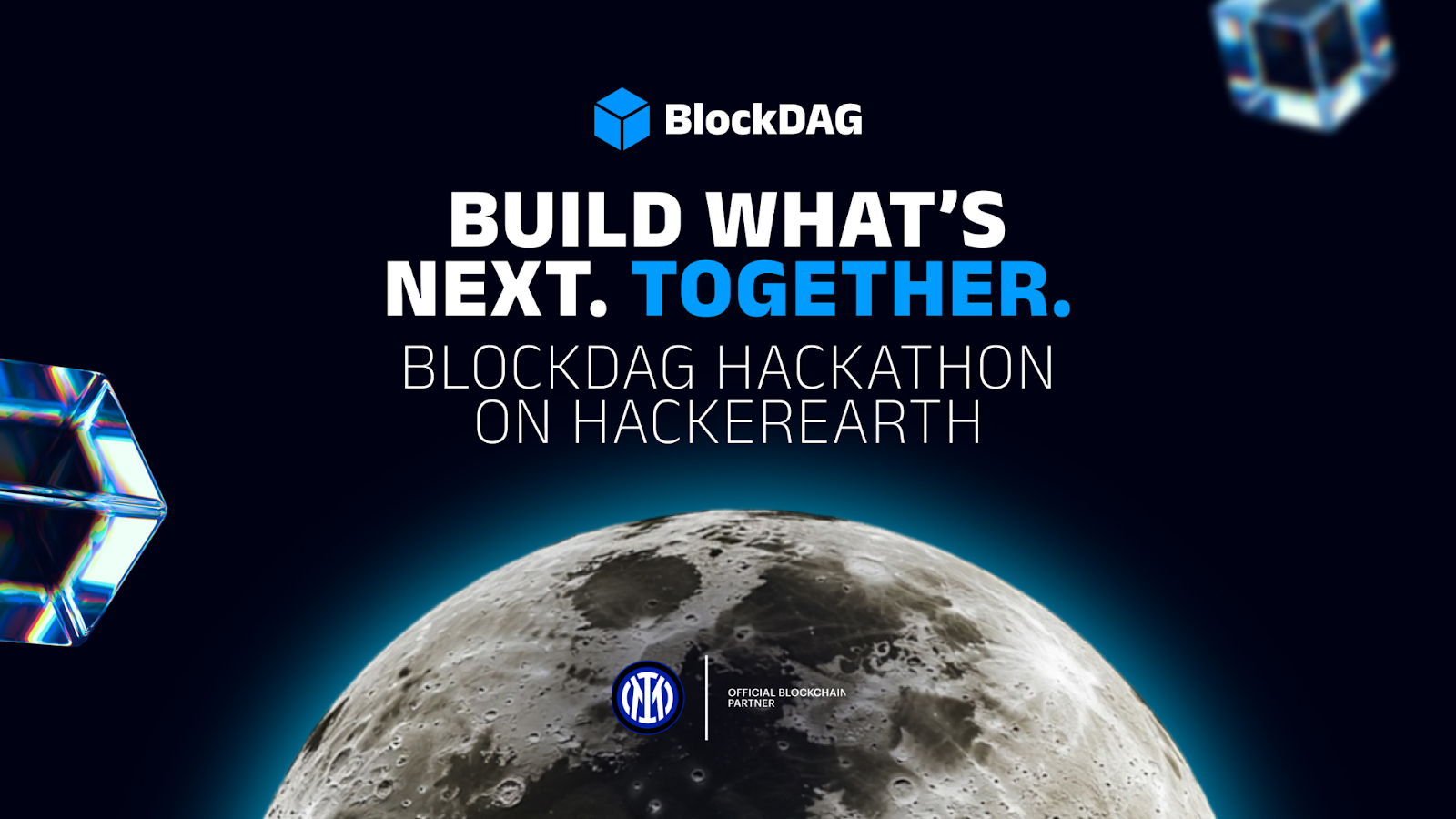
Qubetics’ 5,678% ROI Ranks It Among the Best Cryptos to Invest in Today with Hedera and Polygon
Looking to dive into the world of cryptocurrencies? With hundreds of options, narrowing down the best ones can feel overwhelming. But, if you’re on the hunt for top cryptos to invest in today, a few projects are making waves for their innovation and practical use cases. Qubetics, Hedera, and Polygon are three standout contenders that offer unique solutions to some of the most challenging problems in the blockchain space.
Qubetics is taking the crypto world by storm with its presale, which is generating a lot of excitement. But how does it stack up against the likes of Hedera and Polygon, which have already established themselves in the space? While Qubetics is focused on interoperability and solving scalability issues, Hedera and Polygon are known for their groundbreaking use of decentralized governance and high-speed transaction capabilities. So, what makes each of them a valuable option for short-term opportunities in the crypto world?
In this article, we’ll explore each of these three projects, exploring what sets them apart. By the end, you’ll have a better understanding of which one fits your needs—whether you’re looking for privacy, scalability, or next-gen interoperability.
Qubetics: Next-Gen Blockchain Solutions with Non-Custodial Multi-Chain Wallets
Qubetics is breaking new ground in blockchain technology by addressing interoperability, which has long been a barrier to seamless cross-chain transactions. Businesses, developers, and individuals can now easily interact with multiple blockchains without worrying about compatibility issues. This is a game-changer, as it eliminates the need for isolated ecosystems and simplifies the user experience.
A key feature driving this innovation is Qubetics’ Non-Custodial Multi-Chain Wallet, which allows users to manage assets across various blockchains without relying on third-party custodians. This is a huge win for businesses and professionals who need to stay in control of their digital assets, offering both security and ease of use.
Qubetics also offers advanced tokenization features, allowing for the creation of digital assets that can represent anything from real-world commodities to services. This allows businesses to operate in a decentralized market, opening up opportunities for new financial models.
In addition, Qubetics’ QubeQode IDE is making waves in the blockchain development space. By offering a visual development environment, Qubetics enables developers to build decentralized applications (dApps) faster and more efficiently. This is a crucial advancement for the ecosystem, helping to bring blockchain technology into the mainstream.
Qubetics Presale Hits $16 Million—A Blockchain Revolution is Coming
Qubetics has officially entered its 30th best crypto presale stage, and the excitement surrounding its $TICS token is palpable. Over 24,700 holders have already snapped up more than 508 million tokens, raising a whopping $16.1 million. The presale is set to continue, with $TICS tokens currently priced at $0.1729. So why is this project causing such a stir?
Analysts are predicting significant gains:
- Current $TICS Price: $0.1729
- $TICS at $1 = 477% ROI
- $TICS at $5 = 2789% ROI
- $TICS at $6 = 3367% ROI
- $TICS at $10 = 5678% ROI
- $TICS at $15 = 8567% ROI
Can HBAR Price Hold the Line for a Move to $0.20?
Hedera’s HBAR token is showing promising signs of a potential price rebound, mirroring patterns observed in 2021. Technical analysis by Rekt Capital reveals that HBAR has retraced to a crucial support level after reaching overbought conditions, a scenario reminiscent of its previous market cycle. The cryptocurrency recently broke through resistance levels and now faces a pivotal point—holding the support between $0.16 to $0.22 is essential for a potential upward move towards $0.20.
The Relative Strength Index (RSI) analysis also shows striking similarities to past trends, indicating a reversal zone. If HBAR successfully maintains this support level and the RSI breaks above its downtrend resistance, it could set the stage for a bullish reversal, with optimistic forecasts suggesting significant upside potential.
Aavegotchi Shifts from Polygon to Coinbase’s Base Amid Declining Activity
Aavegotchi, a decentralized finance (DeFi) NFT game, has decided to migrate from Polygon to Coinbase’s Base blockchain after a sharp decline in user activity and total value locked (TVL) on Polygon. With 93.25% of the votes in favor, the Aavegotchi DAO approved the transition, marking a significant shift in sentiment within the Ethereum layer-2 ecosystem.
Polygon’s TVL has plummeted from nearly $10 billion in 2021 to under $740 million, while Base’s TVL has surged since early 2024. The migration to Base is expected to enhance user experience, improve marketplace access, and streamline onboarding through Coinbase’s extensive infrastructure, signaling a change in the DeFi landscape.
Non-Custodial Multi-Chain Wallet: Why It’s the Future of Blockchain Finance
A non-custodial wallet is one in which users retain control of their private keys. This is in contrast to custodial wallets, in which a third-party service holds the keys on behalf of the user. For businesses, professionals, and individuals who need full control over their assets, non-custodial wallets offer a crucial layer of security.
But Qubetics takes it a step further with its multi-chain functionality. This means that users can store and manage assets across multiple blockchains in a single wallet, giving them the flexibility to interact with various ecosystems without juggling multiple wallets. This is a huge advantage for businesses that work with different blockchain networks or anyone who holds assets on multiple chains.
The multi-chain wallet is not only more secure but also more convenient. Instead of interacting with different wallets for different assets, users can consolidate everything into one platform, making transactions and asset management easier and more streamlined.
Conclusion
When looking at the best cryptos to invest in today, Qubetics, Hedera, and Polygon each bring something unique. Whether it’s Qubetics’ non-custodial multi-chain wallet and interoperability features, Hedera’s fast and secure blockchain with decentralized governance, or Polygon’s scaling solution for Ethereum, these projects are at the forefront of blockchain innovation.
However, for those looking to make a real impact on their portfolios, Qubetics stands out due to its cutting-edge solutions that solve real-world problems in the blockchain space.
For More Information:
- Qubetics: https://qubetics.com
- Presale: https://buy.qubetics.com
- Telegram: https://t.me/qubetics
- Twitter: https://x.com/qubetics
FAQs
- What is Qubetics?
Qubetics is a blockchain platform focused on interoperability, scalability, and offering a non-custodial multi-chain wallet for secure asset management. - How does Hedera differ from other blockchain platforms?
Hedera uses the Hashgraph consensus algorithm, which enables fast and secure transactions with a decentralized governance model. - What is Polygon’s role in Ethereum’s ecosystem?
Polygon is a Layer-2 scaling solution for Ethereum that helps reduce fees and increase transaction speed for decentralized applications. - Why is Qubetics’ multi-chain wallet important?
Qubetics’ multi-chain wallet allows users to manage assets across different blockchains, enhancing convenience and security. - What makes Polygon the top choice for DeFi projects?
Polygon provides low-cost and fast transactions while maintaining compatibility with Ethereum, making it ideal for decentralized finance applications.
| Disclaimer: The text above is an advertorial article that is not part of kanalcoin.com editorial content. |









